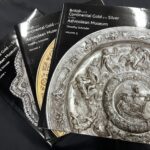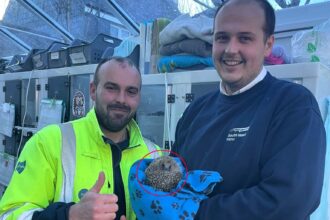Archaeologists have named a newly-discovered fossil after football legend Lionel Messi.
The species of brachiopod, a type of mollusc, lived about 20 million years ago.
Scientists have revealed that it has been dubbed Discinisca Messii, named after the 2022 World Cup winner.

Discinisca Messii was found at Playa Isla Escondida, a coastal town some 30 miles south of Rawson, Argentina.
- Advertisement -
Messi, 35 – tipped to join Inter Miami in the US – is widely regarded as the greatest of all time after his nation’s World Cup win in Qatar.
Experts at the National Scientific and Technical Research Council, based at the Patagonian Institute of Geology and Palaeontology in Puerto Madryn, Argentina, found the species.
Study author Damián Pérez explained: “The work was carried out in 2022 and we sent the final version on 20 December just as we were watching the Argentine players arriving in the country with the World Cup.
“I asked my colleagues about the name and we were all in agreement.
“As far as I know, it is the first ever fossil that bears the name Messi. “The Discinisca Messii fossil is approximately 2.5cm long.
- Advertisement -
“It was a filter feeder, feasting on small microorganisms in water such as diatoms and other plankton organisms.”
Pérez said the mollusc inhabited the northeast of Chubut Province.
The study was co-authored by Pérez’s colleagues Nicolás Farroni, Aylén Allende Mosquera and José Cuitiño.
- Advertisement -
The study was published in the peer-reviewed journal Ameghiniana.

Scientists also discovered a second species of prehistoric brachiopod in the same region.
Like Discinisca Messii, the second species also has football connotations.
The fossil was named Discinisca porvenir after Club El Porvenir based in Pérez’s hometown of Gerli, Buenos Aires Province, of which he is a loyal supporter.
Pérez said: “Both species are part of an extremely rare group of invertebrates, with very few specimens today and even fewer fossil records.
“It is a group of two or three centimetre brachiopods that have phosphatic shells, as if they were made of glass, which is why it caught our attention.
“We came to the conclusion that it is a group called Discinids, genus Discinisca , that lived like limpets and attached to rocks similar to present day mussels.”
Discinisca porvenir was collected at Bryn Gwyn near the town of Gaiman.
Pérez said: “Today these invertebrates live in much warmer places like Peru, northern Chile and the Caribbean.
“This gives us the guideline that the area of Trelew, Gaiman and Puerto Madryn, in addition to being underwater, had higher temperatures than today.
“Calling one of them Messi allows us to talk about brachiopods from 20 million years ago – as well as the fauna of the time – while also thanking the person who has given us so much joy.”
Today, there are around 450 living species of brachiopods around the world.
Meanwhile, fellow Argentine footy great Diego Maradona previously had a wasp, Anaphes Maradonae, and a fossilised dragonfly, Librelula Maradoniana, named after him.
Read the full article here


















